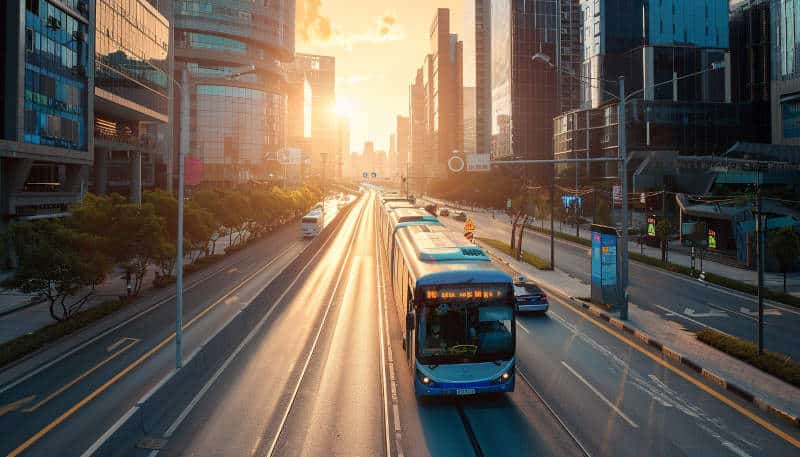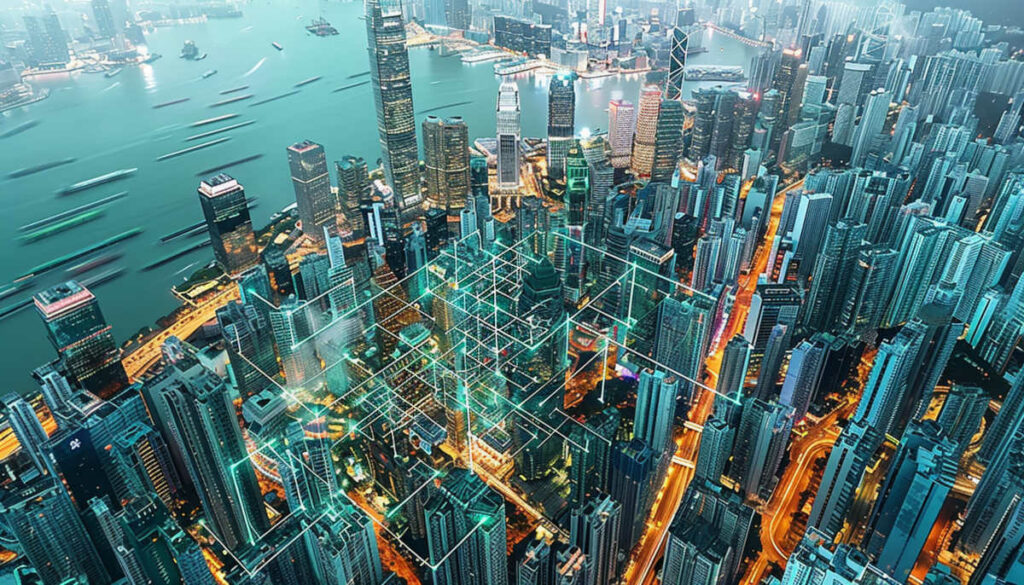Digital cities know how to leverage new technologies to improve their citizens' lives. They smartly utilize connected objects and AI to optimize their services: from public transportation to air quality, waste management, or traffic flow. Explore smart cities, their operational modes, and their challenges.
What is a smart city?
A smart city uses new technologies to enhance urban residents’ quality of life. The city relies on a myriad of digital solutions, connected or otherwise, to optimize all facets of urban development:
- Infrastructure: Buildings are fitted with sensors, IoT (Internet of Things), and home automation solutions, while urban furniture becomes more autonomous and intelligent.
- Networks: Intelligent networks, whether they’re for water, electricity, gas, or telecoms, collect a variety of data (like consumption levels or the proper operation of machinery).
- Mobility: Including connected public transport, smart vehicles, the expansion of car-sharing, bike lanes, public bikes, etc.
- Services: This encompasses the rise of e-services which facilitate remote administrative tasks.
Beyond enhancing citizens’ quality of life, this intelligent urban management also strives to lessen the community’s environmental footprint. Indeed, the smart city is an extension of the sustainable city concept. The objective remains constant, but the methods differ. The smart city fully integrates digital transition into its operational strategies.

How does a smart city operate?
The use of advanced technological solutions
Smart cities excel at exploiting IoT (Internet of Things) to the community’s benefit. Specifically, connected devices will gather data through an extensive network of sensors scattered throughout the city: on electrical meters, water distribution networks, traffic lights, vehicles, electronic ticket validators, waste management facilities, etc.
Given the immense volumes of data collected, this information undergoes initial processing to organize and clarify it. It involves cleaning the data to enhance its comprehensibility, standardizing it, and selecting only the most pertinent bits. This data is then analyzed to gain insights into user behaviors, resource consumption, etc. These insights enable decision-makers (local government officials and businesses) to implement effective strategies to enhance citizens’ quality of life and optimize expenditure.
Collective intelligence
To function efficiently, smart cities require not just information and communication technology (ICT) but also need to harness collective intelligence towards achieving their goals. The concept encourages engaging all citizens to envision a city that truly reflects them. In a smart city, artificial intelligence and collective intelligence coexist harmoniously.
Engaging in collective intelligence also means informing citizens about the initiatives underway. Therefore, local authorities must maintain maximum transparency to facilitate citizen participation in decision-making processes and to hold them accountable for optimizing resources.
Ultimately, becoming a smart city isn’t exclusive to large metropolises like New York.

What challenges does a digital city face?
Typically, a smart city confronts three primary challenges.
Environmental
Thanks to the data collected, the smart city possesses additional means to minimize its environmental impact and tackle ecological challenges.
For instance, sensors can be embedded within drinking water distribution networks to monitor water quality. Detecting any irregularity instantly makes it easier to pinpoint the issue’s source.
Similarly, streetlights equipped with sensors can be installed, which only light up at night when detecting nearby pedestrians.
Through these efforts, the city progressively advances its energy transition.
Modernization
To welcome new inhabitants, cities must perpetually modernize with infrastructure capable of fulfilling their citizens’ expectations.
For example, in cities where traffic congestion is a frequent issue, installing sensors at traffic signals can help better manage the flow of traffic.
Investments
Cities also harbor the ambition to grow: to draw more companies, residents, tourists, etc. Each contributes towards financing the public initiatives executed.
By providing digital solutions that enhance residents’ quality of life, smart cities can attract more individuals; thus, improving the return on investment from the rollout of digital solutions.
Besides generating revenue, IoT can also help the city cut costs. Connected devices are proficient at identifying unnecessary spending or anticipating potential risks.











